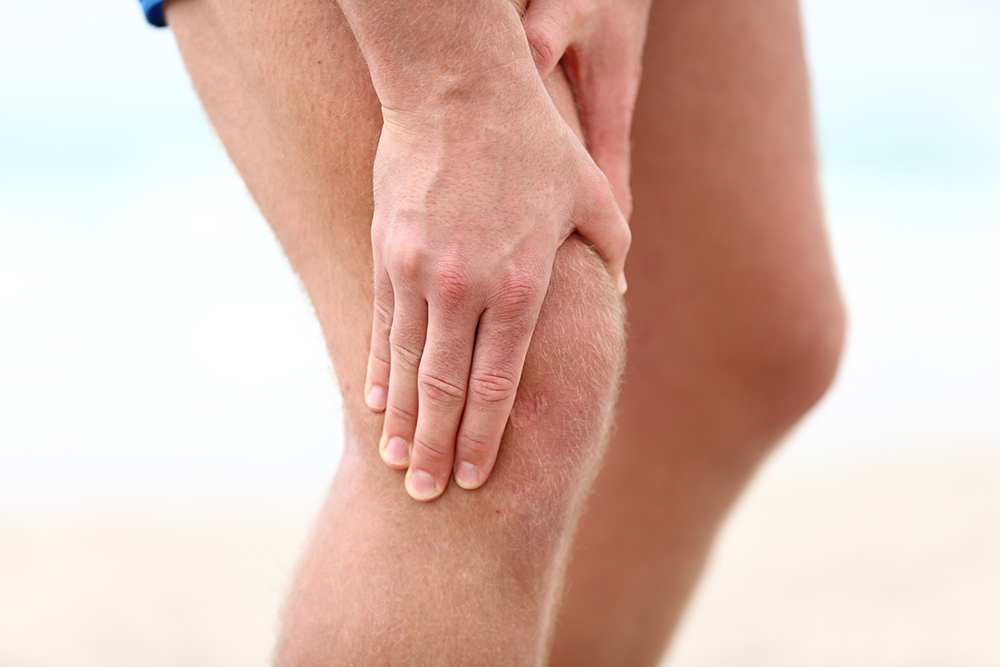Joe Knapp was 14 years old when he was hit head-on by a car while he was riding a bicycle. The accident fractured his left femur at the proximal one-third of the bone and put him in traction for a week. Femur rodding was a new procedure at the time, but the bone healed quickly and Knapp was able to resume sports like basketball and cross-county running.
Fast-forward about ten years. Knapp started to see varicose veins gradually forming on his left ankle and along the scar from the rodding surgery he’d had in high school. At 35, he started to wear knee-high support hose to protect his legs from long shifts as a nurse on a medical-surgical unit. But his leg got worse.
“I wore support hose for more than a decade, but as the years went on, they were less and less helpful,” said Knapp. “When I turned 50, they stopped being effective at all, and I began to notice an itching and heaviness in my legs.”
Fortunately, Knapp had some training in wound care and knew that all venous ulcers start somewhere, often with symptoms of itching and swelling. In addition, there was a history of lymphedema in Knapp’s family. His mother had Milroy’s disease, a condition characterized by lymphedema in the legs and caused by congenital abnormalities in the lymphatic system. Knapp’s sister also developed swollen ankles in her 30’s, and he also has ankles that swell easily.
Knapp’s family history of lymphedema, combined with years of working on a hospital cement tile floors, motivated him to investigate further. And his 2 1/2 years of wound care convinced him to do something about it before it got worse.
“I’ve seen what can happen when some people don’t do anything to address the problem,” said Knapp. “The varicose vein can eventually become a venous ulcer, a wound- and wound healing can turn into a long, arduous process.” He added that once the tissue “has had an assault on the system,” it becomes more difficult to repair as the person ages. The presence of varicosities, or even swelling, can exacerbate it.
In Knapp’s case, awareness led to action. He went to a board-certified phlebologist for a physical exam and diagnostic ultrasound. Together they decided to pursue sclerotherapy, a procedure that Knapp described as “smooth and virtually painless.” He had five sclerotherapy treatments on his legs and the results were immediately apparent. His legs stopped itching and felt lighter, and according to Knapp “they looked much better too.”
Now, three years later, Knapp is a nurse in a private practice. Because of his vein experience and the care he received, he expresses his concern to the doctor whenever he sees varicose veins or other venous issues, in an effort to treat the problem early and prevent further problems, such as venous ulcers, infections, superficial thromboses and potential bleeding.
“Just the idea that I could get an ulcer before I turn 60, no thanks!” Knapp stressed. “These kinds of problems don’t go away on their own- you need to do something about it.”
If you, a friend or a family member suspects varicose veins or other venous issues, we encourage you to come in for a free screening. Proactive Prevention is the best way to keep venous issues under control.

